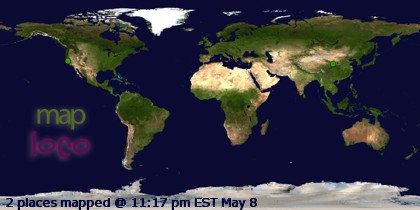As anyone who has visited JustJoeP in the past knows, I am a big fan of hummingbirds. We had them in Phoenix. We have even more species and individual humming birds who visit out yard here in Southern California. I've doubled the number of feeders, and have enjoyed many a moment watching these tiny aerobatic creatures drinking just a few feet away from me. Some would say I post so much stuff about hummingbirds sometimes that it is aggravating (but it's my blog, and I'll post what I want to).
So when I was in Target back in August, and I saw lots and lots of hummingbird food on clearance, I snatched it up. I had been looking for a refillable hummingbird bottle to keep in the fridge, so that I would not have to waste a partial batch when refilling the feeders, and I was out of the dry crystals. I bought a box of the concentrated bags, a large plastic container of premixed, and a moderately sized container of concentrate, thinking "this will last me about a month, at the rate we're burning through it currently". Then I started to read about red dye toxicity, and some friends of DDF and I have a child who had been suffering from severe allergies until red dye was removed from their son's diet, and viola, he improved immensely.
Being the engineer husband of a human geneticist, I've learned to trust peer reviewed scientific literature. NCBI is my portal into the world of scientific studies that are sometimes so complicated that it takes me 2 or 3 re-reads to understand what the paper is trying to say. So before I dove into NCBI, I checked Cornell University's hummingbird page. Cornell has a wealth of bird knowledge online, including graphic descriptions of many species, bird call wav files, and other ornithological reference material. Cornell said (politically correctly) "Never add red food color to sugar water, and never use commercial mixes that have red dyes. Nectar in flowers is clear, and red food coloring may be harmful for hummingbirds."
hmmmm... "Never". Ok. I began to suspect there's a reason to dig deeper. So I began googling.
The hummingbird food manufacturers (like Perky Pet) have an all-out media blitz to say that there's 'no scientific proof that red dye hurts hummingbirds' ... and legally, they're correct. No researcher has taken the time to do a longitudinal study on the 1-to-5 year lives of hummingbirds who consume a diet high in red dyed human-provided nectar, vs hummingbirds who drink only from flowers to get their carbohydrates. First of all, it would be very difficult to do, and secondly, there's large corporate interests (Perky Pet / Woodstream, et al) who do not want bird enthusiasts simply making their own inexpensive sugar water (1/4 cup of sugar to one cup of water) when they could be buying it from a corporation.
An example of the "friendly reply" you get from Perky Pet's ROn O'Kane is here (link):
http://www.hummingbirds.net/dye.html
The editorial response to the PP reply is somewhat emotional... logical and factual, yes, but also a little emotional, so I looked up more studies and factual websites, here (Wild Birds Unlimited), here (gentle world), here (National Geo), and here (snopes). The more I looked, the more saddened I became... it was becoming increasingly obvious that I was not helping my little feathered friends by providing them with needlessly red dyed nectar, and I was probably poisoning them. NCBI drove the final nails into red dye's coffin:
Yes, those were rats or flies, and yes, the they were fed enormous amounts (up to 10% of their total diet) of synthetic red dyes, and they suffered from all sorts of metabolic and reproductive issues... but the "natural red dyes" like carmine are also used by the little creatures who make it to ward off predators and make themselves distasteful to predators. So why lace it into hummingbird nectar when the hummingbirds don't need it, are not attracted to the nectar (they're drinking from the red "blossom", not the bottle with red in it that the humans fill), and other creatures (rats and humans) tend to not do so well when they ingest large quantities of the stuff?
With a heavy heart, I threw out all my hummingbird food, and poured the liquid down the drain. I will use the empty containers (well washed out) to store refrigerated batches for short amounts of time between refills of homemade nectar. But I will no longer be buying corporately made hummingbird food. Instead I will be making my own. Per Cornell University: 1/4 of a cup of sugar to one cup of water. No red dye.
My apologies to all the Rufous, Anna's, Costa's, Black Chinned, Allen's, Broad Tailed, and Lucifer hummingbirds whose tiny families I may have adversely affected in the past. In the new house where we are moving next week, there are a wide variety of flowering plants, and a 6-blossom hummingbird feeder in the yard, to which my six other four-blossom feeders will be added. Only clear sugar water will be used, going forward. No more amaranth or carmine, or their synthetic variants.
10 years ago


No comments:
Post a Comment
Note: Only a member of this blog may post a comment.